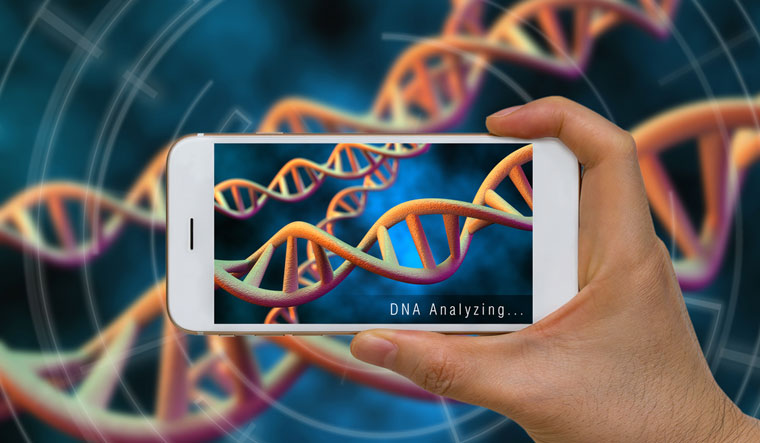For the first time, researchers in the UK have developed ground-breaking techniques for visualising in unprecedented detail how small circles of DNA adopt dance-like movements inside a cell.
Using advanced atomic force microscope technology and a supercomputer, the research team from the Universities of Leeds, Sheffield, York and the John Innes Centre revealed that twisted DNA can develop kinks and creases that help to package it into compact shapes.
Getting a DNA molecule into a cell involves a process of folding called supercoiling, where the DNA is twisted and looped.
The footage shows in unprecedented detail how the stresses and strains that are placed on DNA when it is crammed inside cells can change its shape.
Previously, scientists were only able to see DNA by using microscopes that are limited to taking static images. But now the Yorkshire team has combined advanced atomic force microscopy with supercomputer simulations to create videos of twisted molecules of DNA.
The images are so detailed it is possible to see the iconic double helical structure of DNA, but when combined with the simulations, the researchers were able to see the position of every single atom in the DNA and how it twists and writhes.
"Seeing is believing, but with something as small as DNA, seeing the helical structure of the entire DNA molecule was extremely challenging. The videos we have developed enable us to observe DNA twisting in a level of detail that has never been seen before, said Dr Alice Pyne, Lecturer in Polymers & Soft Matter at the University of Sheffield, who captured the footage.
Dr Agnes Noy, Lecturer at the University of York, who did the theoretical modelling in the study, said: The computer simulations and microscopy images agree so well that they boost the resolution of experiments and enable us to track how each atom of the double helix of DNA dances."
The team looked at DNA minicircles, which are special because the molecule is joined at both ends to form a loop. This loop enabled the researchers to give the DNA minicircles an extra added twist, making the DNA dance more vigorously.
When the researchers imaged relaxed DNA, without any twists, they saw that it did very little. However, when they gave the DNA an added twist, it suddenly became far more dynamic and could be seen to adopt some very exotic shapes.
These exotic dance-moves were found to be the key to finding binding partners for the DNA, as when they adopt a wider range of shapes, then a greater variety of other molecules find it attractive.
Dr. Pyne and her co-worker's new AFM structures of our supercoiled minicircles are extremely exciting because they show, with remarkable detail, how wrinkled, bubbled, kinked, denatured, and strangely shaped they are which we hope to be able to control someday, said professor Lynn Zechiedrich from Baylor College of Medicine in Houston Texas, USA, who made the DNA minicircles used in the study.
The study was published in journal Nature Communications.
The laws of physics apply just as well to the tiny looped DNA as to sub-atomic particles and galaxies. We can use supercomputers to understand the physics of twisted DNA. This should help researchers such as Professor Zechiedrich design bespoke minicircles for future therapies, said Dr Sarah Harris, Associate Professor at the University of Leeds, who supervised the research.
Previous research from Stanford, which detected DNA minicircles in cells, suggests they are potential indicators of health and ageing and may act as early markers for disease.
As the DNA minicircles can twist and bend, they can also become very compact. Being able to study DNA in such detail could accelerate the development of new gene therapies by utilising how twisted and compacted DNA circles can squeeze their way into cells.
The study shows that DNA supercoiling induces kinks and defects that enhance flexibility and recognition.
Researchers develop videos showing helix of 'dancing DNA'
Twisted DNA develops kinks and creases that help to package it into compact shapes

read more
-

What is the importance of Isfahan? A look at erstwhile Safavid capital amid alleged Israeli attack
-

Video of Hyderabad BJP candidate Madhavi Latha 'shooting arrow' at mosque causes controversy
-

The legacy of Met Gala Fashion beyond the red carpet
-

Mumbai Indians Captain Hardik Pandya faces Rs 12 lakh fine for slow over rate against Punjab Kings
-

The power of shared humanity: Uniting for global progress



